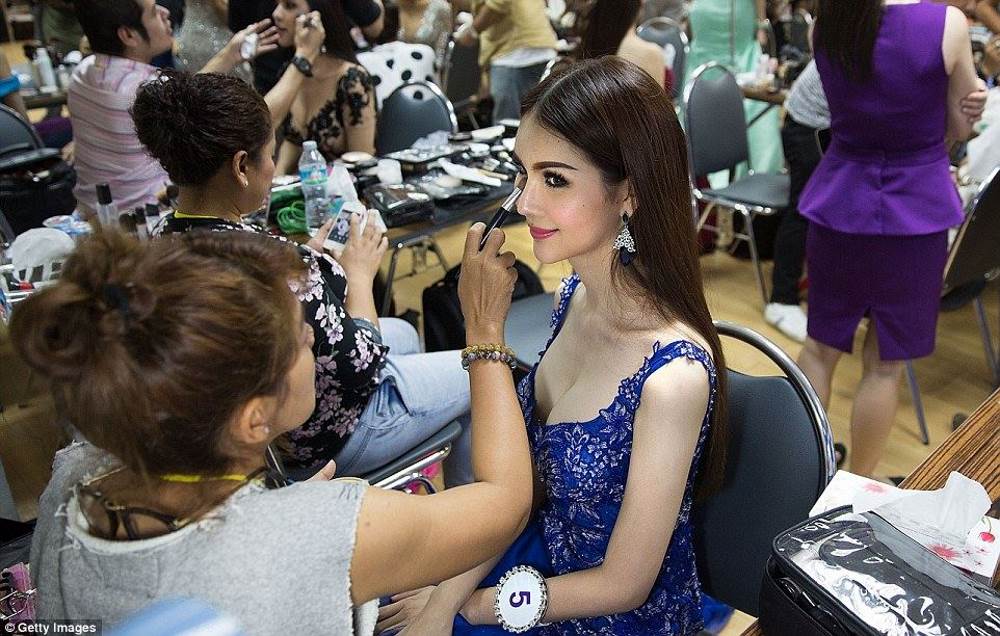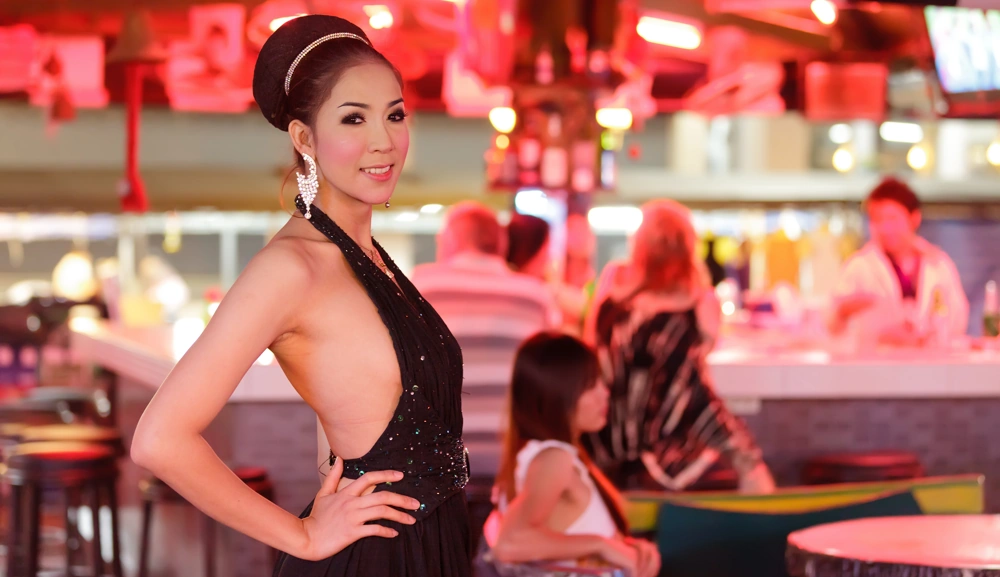Have you ever been curious about ladyboys, their significance in Thai culture, and their unique stories? Today, we'll embark on a fascinating journey, exploring the world of ladyboys and the rich cultural context they inhabit. But first, let's understand what we mean by "ladyboys" and why they play such an important role in Thailand.
Definition of Ladyboys
A "ladyboy" is a term commonly used in Thailand to describe a transgender woman or an effeminate gay man. In the Thai language, they are often called "kathoey," which loosely translates to "third gender." Ladyboys have been part of Thai society for centuries, seamlessly blending into the cultural fabric and contributing to its vibrancy. They can be seen in various roles, from fashion and beauty to entertainment and tourism. To learn more about ladyboys, visit our comprehensive guide on Asian ladyboys.
Importance of Ladyboys in Thai Culture
Ladyboys hold a unique place in Thai culture, which can be traced back to ancient times. They are celebrated in various ways, such as beauty pageants and cabaret shows, which attract tourists from around the world. Additionally, ladyboys have been featured in various media platforms, raising awareness and promoting acceptance of diverse gender identities.
The presence of ladyboys in Thai culture also challenges traditional gender norms, offering a broader perspective on gender identity and expression. Ladyboys often embody the perfect blend of femininity and masculinity, redefining societal expectations in the process. To better understand their impact, and the difference between a ladyboy from Thailand and the Philippines, you can read our blog post on the similarities and differences between Thai and Filipino ladyboys.
Purpose of the Article
Our goal in this article is to provide a comprehensive understanding of ladyboys in Thailand. We will explore their historical roots, the cultural context in which they exist, and the significance of Buddhism in shaping Thai attitudes toward gender identity. We will also discuss the challenges faced by ladyboys and how they continue to break barriers and redefine social norms.
So, buckle up and join us on this exciting exploration of the world of ladyboys in Thailand. We hope that by the end of this article, you'll have a deeper appreciation for the richness and diversity of Thai culture and its ladyboys. Now, let's dive in and discover the fascinating world of ladyboys!
Stay tuned for the next sections of the article, where we'll delve deeper into the cultural context of ladyboys in Thailand, their lives, and the role of Buddhism in shaping Thai attitudes towards gender identity.
The Cultural Context of Ladyboys in Thailand
In this section, we'll delve deeper into the captivating world of ladyboys and the cultural context that has shaped their presence in Thailand. We'll explore their historical roots, traditional Thai attitudes toward gender identity, and how ladyboys have emerged as an integral part of modern Thai society.
Historical Roots of Ladyboys in Thailand
Ladyboys have a long and storied history in Thailand, dating back to ancient times. In many pre-modern Southeast Asian cultures, the concept of a "third gender" was widely recognized and accepted. Some historical records suggest that ladyboys played significant roles in royal courts, where their unique talents and skills were highly valued.
The presence of ladyboys in Thai history highlights the fluidity of gender identity in the region, which has continued to evolve over time. To learn more about the history of ladyboys in Thailand, check out our blog post on Thai ladyboys.
Traditional Thai Attitudes Towards Gender Identity
Thai culture has long embraced a more fluid and open-minded approach to gender identity. This acceptance can be partly attributed to the influence of Buddhism, which teaches compassion, understanding, and respect for all living beings.
Thailand's traditional attitudes towards gender identity have allowed ladyboys to coexist harmoniously with their fellow citizens. While ladyboys may still face discrimination in some areas of life, Thai society as a whole is considered more accepting of diverse gender identities than many Western cultures. This acceptance has allowed ladyboys to thrive in various sectors, such as entertainment, fashion, and tourism.
The Emergence of Ladyboys in Modern Thai Society
In recent decades, ladyboys have become increasingly visible in Thai society, thanks in part to the growing popularity of beauty pageants and cabaret shows. These events showcase the talent, beauty, and charm of ladyboys, attracting tourists from around the world.
Ladyboys have also become more prominent in mainstream media, with many ladyboy celebrities gaining fame and recognition both in Thailand and internationally. This growing visibility has helped to challenge stereotypes, foster understanding, and promote acceptance of ladyboys as a valuable part of Thai society.
However, it's essential to remember that not all ladyboys are involved in the entertainment industry. Many ladyboys hold regular jobs and lead ordinary lives, contributing to their communities in various ways.
In conclusion, the cultural context of ladyboys in Thailand is deeply rooted in the country's history and traditional attitudes toward gender identity. The emergence of ladyboys in modern Thai society has brought greater visibility and acceptance, enabling them to play a vital role in shaping the nation's cultural landscape.
Stay tuned for our upcoming sections, where we'll explore the lives of ladyboys in Thailand, the role of Buddhism in shaping Thai attitudes towards gender identity, and the complexities of gender identity in this fascinating country.
The Lives of Ladyboys in Thailand
Now that we've delved into the cultural context of ladyboys in Thailand, let's take a closer look at their everyday lives. In this section, we'll explore the roles of ladyboys in family life, their experiences in education and employment, the challenges and discrimination they face, and their connection to the sex industry.
Ladyboys in the Family
Family plays a central role in Thai culture, and ladyboys are no exception. Many ladyboys maintain close relationships with their families, who often provide support and understanding. While some families may struggle to accept their child's gender identity, many come to embrace their loved ones as they are, recognizing the importance of love and unity.
Education and Employment
Ladyboys in Thailand have access to education, just like their cisgender peers. However, they may face unique challenges, such as bullying or discrimination from classmates or teachers. Despite these obstacles, many ladyboys persevere and excel in their studies, going on to pursue successful careers in various fields.
When it comes to employment, ladyboys can be found in a diverse range of occupations. Some work in the entertainment industry, while others hold positions in sectors such as fashion, business, or tourism. However, it's important to acknowledge that ladyboys may still face discrimination in the workplace, which can limit their opportunities for advancement.
Challenges and Discrimination Faced by Ladyboys
Despite the relative acceptance of ladyboys in Thai society, they still face numerous challenges and discrimination. These obstacles can range from social stigma and prejudice to legal and institutional barriers that restrict their rights and access to essential services.
Ladyboys and the Sex Industry
It's important to address the misconception that all ladyboys are involved in the sex industry. While some ladyboys do work in this sector, it's crucial to recognize that they represent only a small fraction of the overall ladyboy population. Many ladyboys have successful careers outside of the sex industry and lead fulfilling lives in various aspects of society.
In conclusion, the lives of ladyboys in Thailand are diverse and multifaceted, reflecting the complex tapestry of Thai culture. Ladyboys play essential roles in their families, overcome challenges in education and employment, and contribute to society in countless ways. By understanding their unique experiences and acknowledging their worth, we can foster greater empathy and acceptance for ladyboys in Thailand and beyond.
In the next sections, we will explore the celebration of ladyboys in Thai culture, the role of Buddhism in shaping attitudes towards gender identity, and the complexities of gender identity in Thailand.

The Celebration of Ladyboys in Thai Culture
In this section, we'll explore the various ways ladyboys are celebrated and embraced in Thai culture. We'll discuss their roles in the entertainment industry, the importance of ladyboy beauty pageants, and the vibrant festivals and parades that showcase their talent and beauty.
Ladyboys in the Entertainment Industry
Ladyboys have long been a fixture in Thailand's entertainment industry, captivating audiences with their grace, charm, and talent. From cabaret shows and live performances to television and film, ladyboys have carved out a unique niche in the world of entertainment. Some popular ladyboy cabaret shows, like Tiffany's, even feature ladyboys as their star performers.
Their presence in the entertainment industry has helped to challenge stereotypes and promote greater understanding and acceptance of ladyboys, both within Thailand and internationally.
Ladyboy Beauty Pageants
One of the most visible ways in which ladyboys are celebrated in Thai culture is through beauty pageants. These events highlight the elegance, poise, and beauty of ladyboys, allowing them to shine on stage and showcase their talents. Many ladyboy beauty pageants, such as Miss Tiffany's Universe and Miss International Queen, have gained international recognition and attracted participants from around the world.
These pageants not only provide a platform for ladyboys to express themselves but also help to promote awareness and acceptance of diverse gender identities.

Ladyboy Festivals and Parades
In addition to beauty pageants, ladyboys are often celebrated in Thailand through various festivals and parades. These colorful and lively events draw large crowds, showcasing the talent and creativity of ladyboys while fostering a sense of community and pride.
One such event is the annual Pattaya International Pride, which celebrates LGBTQ+ individuals, including ladyboys. These festivals and parades help to create a more inclusive and accepting atmosphere, demonstrating the importance of embracing diversity and championing equal rights for all.
In conclusion, the celebration of ladyboys in Thai culture is an important aspect of the country's rich and diverse heritage. Through their involvement in the entertainment industry, beauty pageants, and festive events, ladyboys have captured the hearts and minds of people around the world, promoting greater understanding and acceptance of diverse gender identities.
Stay tuned for our upcoming sections, where we'll delve into the role of Buddhism in shaping Thai attitudes towards gender identity, the complexities of gender identity in Thailand, and the changing attitudes towards ladyboys in Thai society.
The Role of Buddhism in Shaping Thai Attitudes Towards Gender Identity
In this section, we'll explore the significant influence of Buddhism on shaping Thai attitudes toward gender identity, including the beliefs surrounding gender and sexuality, the intersection of Buddhism and Thai culture, and the relationship between ladyboys and Buddhist monasticism.
Buddhist Beliefs on Gender and Sexuality
Buddhism, the predominant religion in Thailand, teaches that all beings are interconnected and subject to the cycle of birth, death, and rebirth. This cycle, known as samsara, is influenced by an individual's karma or actions in previous lives. In Buddhist thought, one's gender or sexual orientation is not seen as a fixed or permanent aspect of their being but rather as a transient characteristic that may change from one life to another.
This perspective on the fluidity of gender has contributed to a more open and accepting attitude towards ladyboys and other diverse gender identities in Thai culture. However, it's essential to recognize that interpretations of Buddhist teachings can vary, and some conservative Buddhists may hold less inclusive views on gender and sexuality.
The Intersection of Buddhism and Thai Culture
The interplay between Buddhism and Thai culture has resulted in a unique blend of religious and cultural values that influence the country's attitudes toward gender identity. While some aspects of Thai culture may appear more conservative, the influence of Buddhism has contributed to a more flexible and accepting view of diverse gender identities, including ladyboys.
This intersection of religion and culture is one of the reasons why Thailand has become known for its relatively accepting attitude towards ladyboys and the LGBTQ+ community as a whole.
Ladyboys and Buddhist Monasticism
An interesting aspect of the relationship between Buddhism and ladyboys is the role of Buddhist monasticism. In Thailand, it is common for men to become monks for a period, a practice that is considered to bring merit to themselves and their families. However, ladyboys often face challenges when attempting to join the monastic community.
While some ladyboys have successfully become ordained as monks, others may be denied entry due to their gender identity. This exclusion can be a source of tension between the ladyboy community and the Buddhist establishment, highlighting the ongoing need for dialogue and understanding between all parties.
In conclusion, Buddhism has played a significant role in shaping Thai attitudes toward gender identity, contributing to a more open and accepting view of ladyboys and other diverse gender expressions. The interplay between Buddhism and Thai culture, as well as the unique challenges faced by ladyboys in relation to Buddhist monasticism, demonstrates the complexity of this issue and the need for continued dialogue and understanding.
In our upcoming sections, we'll explore the complexities of gender identity in Thailand, the changing attitudes towards ladyboys in Thai society, and the importance of embracing diversity.
Understanding the Complexities of Gender Identity in Thailand
In this section, we'll delve into the complexities of gender identity in Thailand, discussing the concept of "kathoey," the differences between ladyboys and transgender individuals in the West, and the intersection of gender identity and sexual orientation.
The Concept of "Kathoey"
The term "kathoey" is a Thai word that can be loosely translated as "ladyboy" or "transgender woman." However, the concept of kathoey is more nuanced and encompasses a broader range of gender identities and expressions than its English counterparts. Kathoey can include transgender women, effeminate gay men, and others who do not conform to traditional gender norms.
It's essential to recognize that the kathoey identity is unique to Thai culture and cannot be entirely understood through a Western lens.
Differences Between Ladyboys and Transgender Individuals in the West
While there are similarities between Thai ladyboys and transgender individuals in the West, it's important to acknowledge the cultural differences that shape these identities. In the West, the term "transgender" typically refers to someone who identifies with a gender different from the one they were assigned at birth. In contrast, ladyboys in Thailand often embrace a more fluid concept of gender, influenced by cultural and religious factors.
Moreover, the transgender experience in the West is often closely tied to the medical transition process, whereas in Thailand, many ladyboys may not undergo hormone therapy or surgery. This difference can be attributed to factors such as accessibility, cost, and cultural attitudes toward medical interventions.
The Intersection of Gender Identity and Sexual Orientation
In Thailand, as in many other cultures, gender identity and sexual orientation are often intertwined. While ladyboys are typically attracted to men, their gender identity does not dictate their sexual orientation. Some ladyboys may identify as gay, while others may see themselves as heterosexual women.
It's essential to recognize that gender identity and sexual orientation are distinct aspects of a person's identity, and one does not necessarily determine the other. To better understand the unique challenges of dating a ladyboy, visit our blog post on how to date a ladyboy properly.
In conclusion, understanding the complexities of gender identity in Thailand requires acknowledging the unique cultural and religious factors that shape the experiences of ladyboys and other gender-diverse individuals. By appreciating these differences, we can foster greater understanding and acceptance of diverse gender identities and expressions, both within Thailand and beyond.
Stay tuned for our final sections, where we'll explore the changing attitudes towards ladyboys in Thailand and the importance of embracing diversity.
The Changing Attitudes Towards Ladyboys in Thailand
In this section, we'll discuss the changing attitudes towards ladyboys in Thailand, focusing on their representation in the media, their legal and political rights, and what the future may hold for ladyboys in Thai society.
Ladyboys in the Media
In recent years, there has been a noticeable increase in the visibility of ladyboys in Thai media. This increased representation has played a crucial role in challenging stereotypes and raising awareness about the lives and experiences of ladyboys. Many ladyboys have found success in the entertainment industry, working as models, actors, and singers. Popular TV shows and movies featuring ladyboys have helped to break down barriers and foster a more inclusive understanding of gender diversity.
For a glimpse into the world of ladyboy entertainment, check out our blog post about ladyboys and beauty pageants

Legal and Political Rights of Ladyboys
While there have been some positive steps in recent years, ladyboys in Thailand still face legal and political challenges. For example, Thai law does not yet allow transgender individuals to change their legal gender, which can lead to difficulties in accessing education, healthcare, and employment.
However, the situation is gradually improving, with the Thai government considering revisions to the legal framework to better accommodate the rights and needs of ladyboys and transgender individuals. Activists and advocacy groups continue to fight for greater recognition and protection of the rights of ladyboys in Thailand.
The Future of Ladyboys in Thai Society
The future of ladyboys in Thai society is uncertain, but there are reasons to be hopeful. As attitudes continue to evolve and awareness grows, we can expect to see greater acceptance and understanding of the ladyboy community. Increased representation in the media, advancements in legal and political rights, and a more inclusive society will undoubtedly contribute to a brighter future for ladyboys in Thailand.
In conclusion, the changing attitudes towards ladyboys in Thailand are a testament to the power of increased visibility, awareness, and understanding. By continuing to engage in open dialogue and challenging stereotypes, we can help to create a more inclusive and accepting society for ladyboys and all individuals, regardless of their gender identity.
As we wrap up our discussion on ladyboys in Thailand, we hope that you've gained a deeper understanding of the unique cultural context and challenges they face.
Conclusion of Thai Ladyboys
As we conclude our exploration of ladyboys in Thailand, let's reflect on the importance of embracing diversity, the role of ladyboys in promoting gender equality, and the need for greater understanding and acceptance.
The Importance of Embracing Diversity
Embracing diversity is vital for fostering a harmonious and inclusive society. By recognizing and celebrating the unique experiences and perspectives of ladyboys, we can create a more accepting environment where everyone can express their true selves without fear of discrimination. Diversity enriches our lives, and by embracing it, we can learn from one another and grow together as a community.
The Role of Ladyboys in Promoting Gender Equality
Ladyboys play a crucial role in promoting gender equality by challenging traditional notions of gender and advocating for the rights of all individuals, regardless of their gender identity. As visible members of the LGBTQ+ community, ladyboys help to raise awareness about the unique experiences and challenges faced by gender-diverse individuals, paving the way for a more inclusive society.
The Need for Greater Understanding and Acceptance
Greater understanding and acceptance of ladyboys and other gender-diverse individuals are essential for creating a more inclusive society. By educating ourselves, engaging in open dialogue, and challenging stereotypes, we can foster a greater sense of empathy and respect for all individuals, regardless of their gender identity.
In closing, be sure to visit our blog for more engaging articles on ladyboys, dating, and more. Together, we can create a more inclusive and accepting world where everyone is free to express their true selves.
Thai Ladyboys: Frequently Asked Questions and Insights
In this FAQ section, we will address some common questions about the cultural context of ladyboys in Thailand, their role in promoting gender equality and diversity, the influence of media representation on societal attitudes, and the impact of Buddhism on Thai attitudes toward gender identity and ladyboys. By answering these questions, we hope to provide you with a deeper understanding of the unique experiences and significance of Thai ladyboys in their society.
How have attitudes towards ladyboys in Thailand evolved over time?
Attitudes towards ladyboys in Thailand have undergone significant changes over time. Historically, Thai society has been more accepting of gender diversity, with ladyboys playing important roles in various aspects of Thai culture. However, the influence of Western values has led to a shift in attitudes, with ladyboys facing greater discrimination and stigma in recent decades. Despite these challenges, the visibility and acceptance of ladyboys have been gradually increasing, thanks to their representation in the media and advocacy efforts by activists.
What challenges do ladyboys face in Thai society, and how are they advocating for their rights?
Ladyboys in Thailand face a range of challenges, including discrimination, limited access to education and employment opportunities, and legal hurdles related to their gender identity. They also face negative stereotypes and stigma, particularly in the context of the sex industry. To advocate for their rights, ladyboys and their allies work to raise awareness about the unique experiences and challenges faced by gender-diverse individuals, push for changes in laws and policies, and promote a more inclusive society.
How does the cultural context of ladyboys in Thailand differ from that of transgender individuals in the West?
The cultural context of ladyboys in Thailand is deeply rooted in the country's history and traditions, with a more fluid understanding of gender than in the West. While transgender individuals in the West often face a binary understanding of gender, Thai society has historically been more accepting of gender diversity, recognizing the existence of a "third gender" or "kathoey." As a result, the experiences and challenges faced by Thai ladyboys may differ significantly from those of transgender individuals in the West, particularly when it comes to societal acceptance and cultural integration.
What role do ladyboys play in promoting gender equality and diversity in Thailand?
Ladyboys play a vital role in promoting gender equality and diversity in Thailand by challenging traditional gender norms and advocating for the rights and acceptance of all individuals, regardless of their gender identity. As prominent members of the LGBTQ+ community, ladyboys help to raise awareness about the unique experiences and challenges faced by gender-diverse individuals, paving the way for a more inclusive society that celebrates and respects diversity in all its forms.
How has the media representation of ladyboys in Thailand influenced societal attitudes towards them?
Media representation of ladyboys in Thailand has played a significant role in shaping societal attitudes towards them. In recent years, the increased visibility of ladyboys in the entertainment industry, beauty pageants, and other forms of media has helped to challenge stereotypes and promote a more positive and inclusive image of ladyboys. As a result, the media representation of ladyboys has contributed to a gradual shift in societal attitudes, with more people recognizing and embracing the unique experiences and contributions of ladyboys in Thai society.
What impact does Buddhism have on shaping Thai attitudes towards gender identity and ladyboys?
Buddhism plays a significant role in shaping Thai attitudes towards gender identity and ladyboys. Buddhist teachings emphasize the impermanence of life and the idea that attachment to the physical body is a source of suffering. As a result, Thai Buddhism tends to be more open and accepting of gender diversity, recognizing that an individual's gender identity is just one aspect of their existence. This acceptance, combined with the cultural belief in karma and reincarnation, has contributed to a more inclusive attitude towards ladyboys in Thai society. However, it is important to note that individual attitudes and practices may vary, and not all Buddhists in Thailand may hold the same views on gender identity and ladyboys.



